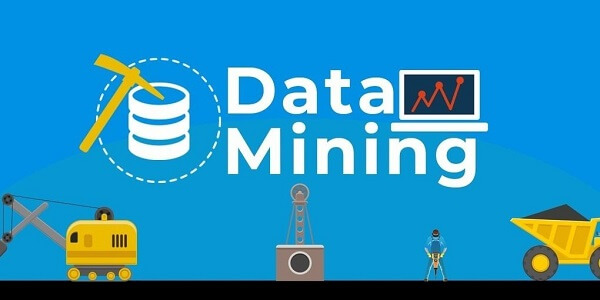Advantages and Disadvantages of Data MiningDefinition of Data Mining:Data mining, also known as "Knowledge Discovery in Databases" or KDD, is the stage of analysis that seeks to identify patterns in massive datasets. It is a branch of statistics. It uses database management systems, statistics, machine learning, and artificial intelligence techniques. Data mining's major objective is to extract information from a data set and put it in an understandable structure for later use. It addresses features of raw analysis as well as data and database administration, data processing, model and inference considerations, interest metrics, considerations of computational complexity theory, post-processing of revealed structures, visualization, and online update. The phrase is widely used but frequently used incorrectly to refer to any extensive data or information processing (collection, extraction, storage, analysis, and statistics), as well as to refer to any kind of computer decision support system, including artificial intelligence, machine learning, and business intelligence. The crucial concept is discovery, typically interpreted as "the notice of something new." 
Even the well-known book "Data Mining: System of Practical Learning Tools and Techniques with Java" (which contains all machine learning information) was originally meant to be referred to as just "the machine of Practical Learning," and the phrase "mining of data" was not even in the title. For marketing purposes, it was included. The broadest phrases, such as "(large scale) data analysis," "analysis," or, when referring to modern techniques, artificial intelligence, and machine learning, are frequently preferable. The true goal of data mining is to automatically or semi-automatically analyze enormous amounts of data to find previously unknown patterns, such as record clusters, anomalous records, and dependencies (mining by association rules). For this, database techniques like spatial indexes are frequently employed. These patterns can subsequently be employed in further analyses or, for instance, in machine learning and predictive analysis, as a summary of the incoming data. A decision support system can use the categories of data that are identified, for instance, in the data mining process, to produce more accurate predictions. Data gathering, data preparation, and the interpretation of information and results are all additional steps that are part of the KDD process as a whole rather than being a part of the data mining stage. The words "data gathering," "data fishing," and "data spying" describe the use of data mining techniques to sample areas of a larger, existing population data set that are (or maybe) too small for the statistical conclusions that were made regarding the validity of any patterns that were found. The development of fresh hypotheses examined against larger data populations can be accomplished using these techniques. 
Advantages of Data Mining:
Direct marketers can benefit from data mining by providing precise and helpful trends regarding their target audience's purchase habits. These trends enable marketers to target their target market more precisely with their marketing efforts. For consumers with a long history of purchasing software, a software company's marketing may promote its new product. Additionally, data mining can aid marketers in making predictions about the goods their target customers may be interested in buying. Marketers can surprise consumers and enhance the shopping experience by making this forecast. Data mining techniques can also be advantageous for retail establishments. For instance, store management can combine shelves and particular stock items or provide a price based on patterns supported by data mining that will draw customers.
Financial companies can benefit from data mining in areas like credit documentation and loan records. A bank, for instance, can determine the degree of risk associated with each specific loan by assessing prior consumers who share comparable features. Data mining can also assist credit card issuers in alerting customers to possibly fraudulent credit card transactions. Credit card issuers can cut their losses even though data mining technology only sometimes predicts fraudulent charges with 100% accuracy.
Manufacturers can spot defective equipment and establish the best control parameters by using data mining on operational engineering data. For instance, semiconductor manufacturers face a dilemma since even in diverse wafer production facilities' manufacturing environments, the quality of the wafers is generally the same, and some even have faults for unexplained reasons. Data mining has been used to identify the control parameter ranges that result in the fabrication of the golden wafer. The desired grade wafers are then produced using those ideal control settings.
Every consumer in the market is unique in their ways. Their fundamental behavior and traits differ. As a result, it is easier to comprehend their preferences with the right methodology. Businesses may better identify their clients with data mining, increasing the likelihood that they will buy their products.
Governments and other institutions can use market analysis data to identify criminals. For instance, the data can be structured to make it easier to analyze a customer's prior transactions. As a result, it might quickly reveal any fraudulent activity.
New business prospects are made possible by the data mining process. Data mining can be used with all products to adopt the proper company strategy. As an illustration, delivering the appropriate product to the customer helps ensure product sales. In addition, the data mining information will enable organizations to use various marketing strategies.
Businesses can build data models using data mining approaches. They could quickly determine which people would be interested in their products using these models. As a result, the firms may be sure that the products they introduce will be profitable. Therefore, whatever new products are presented will help the company's profits expand.
By discovering patterns in location, crime type, habit, and other behavior patterns, data mining can help law enforcement locate and apprehend criminal offenders. Disadvantages of Data Mining:
Businesses gather data about their customers in various ways to understand the trends in their buying habits. Particularly now that the internet is booming with social networks, e-commerce, forums, and blogs, concerns about personal privacy have been growing significantly. People worry that their personal information will be collected and used unethically, which could get them into a lot of trouble due to privacy concerns. However, businesses don't last forever; on occasion, they might be bought out by another company or go out of business entirely. At this time, they likely sell or leak the personal information they possess.
A major concern is security. Social Security numbers, birthdays, salary information, and other details about customers and employees are owned by businesses. But it still needs to be determined how well this information is protected. Many large corporations like Ford Motor Credit Company and Sony Pictures have seen hackers access and steal large amounts of consumer data. The credit card was stolen, and identity theft became a major issue because so much financial and personal information was available.
Data mining techniques can be used improperly to gather information for unethical objectives. Using this information to their advantage, unethical individuals or organizations could discriminate against a certain group of people or take advantage of the weak. A further drawback of data mining is its imperfect accuracy. Inaccurate information will have major repercussions if used to make decisions.
A particularly expensive procedure is data mining. For instance, businesses need to hire more staff and technical experts to ensure that data mining is done properly. Advanced data mining software is necessary for many firms but may be expensive. Because they need to yield more useful insights, data mining often costs more than it saves for most small enterprises.
Depending on how they should be used, various mining tools are available. They each have a distinctive algorithm and design. Selecting the appropriate tool will only be possible with the required technical knowledge. Therefore, it is necessary to send out a competent specialist to handle the tool selection.
Even though data mining has created a framework for simple data collection with its techniques, its accuracy is still constrained. Making decisions can be complicated by erroneous information that has been acquired.
Although data mining is one of the most effective tools in a marketer's arsenal, it has its challenges. One such disadvantage is that huge datasets are necessary for data mining to be effective. For instance, if an email list contains just 100 subscribers, more than the data from those emails will be required for data mining. On the other hand, more information will be available, and data mining will be more successful if the list has 100,000 persons.
Accurate information is only sometimes produced through data mining. There are numerous methods for analyzing data, some of which are more precise than others. Predictive models, for instance, rely on the expectation that particular data patterns will be discovered. When only some facts back a forecast, this can result in overestimating how accurate it will turn out. Another problem arises when a database contains missing data that must be considered to produce an accurate analysis. The ConclusionLarge informational collections are mined for patterns using a process called data mining. Reduced fraud and increased organizational efficiency are only two benefits of data mining. It's crucial because it enables users to examine the data in fresh ways or unearth trends they were unaware of. Data mining can also have drawbacks, such as faulty or biased data and false insights. |
 For Videos Join Our Youtube Channel: Join Now
For Videos Join Our Youtube Channel: Join Now
Feedback
- Send your Feedback to [email protected]
Help Others, Please Share










